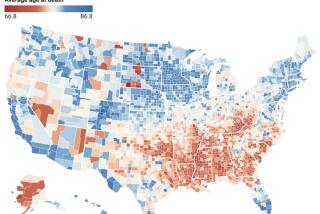Cancer death rates fall as HPV-associated cancers rise: U.S. report
This year’s Annual Report to the Nation on the Status of Cancer, released online Monday, brought Americans good news and bad.
Extending a trend since the early 1990s, authors reported in the Journal of the National Cancer Institute that cancer deaths have continued to fall in the United States, with rates declining 1.5% per year for all cancers, in both sexes combined, from 2000 to 2009. Deaths from the most common cancers — including lung, colon and rectal, breast cancer in women and prostate cancer — fell during that period too, as did the incidence of many forms of the disease.
But the report, a collaboration between the National Cancer Institute, the U.S. Centers for Disease Control, the American Cancer Society and the North American Association of Central Cancer Registries, also noted upticks in the numbers of some cancers associated with infection with the human papillomavirus, or HPV, including anal and throat cancers.
The authors warned that as they “continue to rise, these cases will contribute to the overall growing number of cancers associated with population aging and expansion, requiring additional resources for medical research and treatment.”
The team also examined how many girls in the U.S. had received HPV immunizations — and found the numbers were low. A three-dose course of an HPV vaccine is recommended for all 11- or 12-year-old girls as well as for girls and young women ages 13 through 26 who haven’t received the immunization. But the researchers found that only 32% of adolescent girls 13 to 17 had received all three doses of the vaccine in 2010, with less than half having even received a single dose. The federal government has set a goal of 80% immunization among girls by 2020.
“The continuing drop in cancer mortality over the past two decades is reason to cheer,” said American Cancer Society Chief Executive John Seffrin, in a statement. “The challenge we now face is how to continue those gains in the face of new obstacles, like obesity and HPV infections.”







